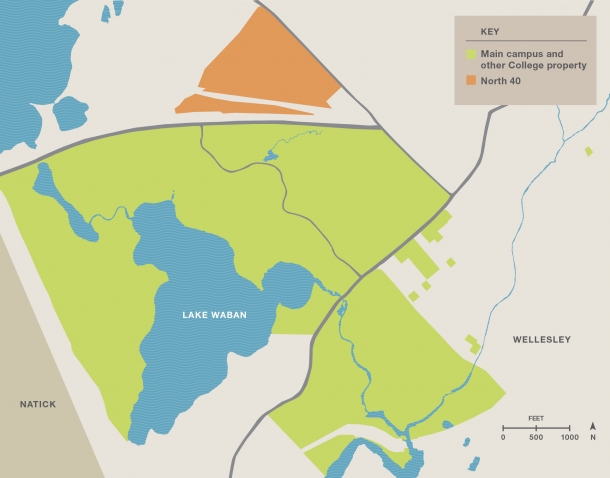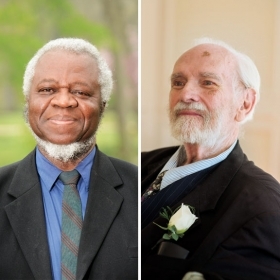To the townspeople of Wellesley, it’s a premier place to walk dogs and dig in the dirt, victory-garden style. To most students, it’s terra incognita—a place they never set foot, unless they are into organic farming. And to the College, it’s now a potential source of revenue.
It is the North 40—47 acres across Route 135 and the railroad from Munger and the Hazard Quad. The land, which the College has owned almost since its founding, “has long proven unfeasible for academic, athletic, or related College purposes,” President H. Kim Bottomly wrote to the Wellesley community in April. However, the College had been unable to explore non-academic development options for this parcel because it has been restricted by the deed that donated the land to the College in 1873 … until this May.
As the administration and trustees were considering ways to fund campus renewal plans (see “Wellesley Reimagined,” spring ’14), the College filed a petition with the Massachusetts Supreme Judicial Court seeking to remove the restrictions on the use of the North 40 parcel. On May 5, the SJC granted that request, clearing the way for Wellesley to sell, lease, or develop the land.
The North 40 currently holds walking trails and vegetable and flower gardens for townspeople and the student organization Regeneration, an organic farm that was founded in 2007. Gardens have been on the land at least since World War I, when Wellesley “farmerettes” supported the war effort with vegetable gardens (below, students planting potatoes during World War II). In the 1950s, the College leased part of the land to the town for use as a household-waste facility, an area that has since been covered by trees.
 Image: Courtesy Wellesley College Archives
Image: Courtesy Wellesley College Archives
This has been the extent of the use of the land, although the College has looked at other opportunities for the North 40 several times. In the 1980s, the College explored using it for a continuing-care retirement community, and it got permission from the Supreme Judicial Court for a 60-year lease of the North 40 for that purpose. However, plans didn’t go further, mainly because the economy slowed down, says Marianne Brons Cooley ’81, clerk of the board of trustees and assistant to the president. In the early 1990s, the College investigated using the land for athletic fields. However, its location north of Route 135 and the railroad tracks posed a significant challenge.
“We looked at building a bridge over. We looked at building a tunnel under. And in both cases, we felt that it would be very expensive, that it would create safety hazards, and that the barriers were such that it would prevent students from taking full advantage of [the fields],” says Benjamin Hammond, vice president for finance and administration.
But now, with the restrictions lifted by the court, other options are open. The property is zoned as single-family residential and also allows educational, religious, and municipal uses. A town bylaw also requires at least 50 percent of the land to be preserved as open space, if a subdivision creates five or more lots.
On May 6, the College briefed Wellesley residents and alumnae on the North 40, drawing some 170 attendees. “There were many people who were quite concerned,” says Hammond. “And then there were also some who were pretty excited for the town and … talked about this as potentially a game changer for the town of Wellesley, if done right.”
The College has initiated an appraisal, and expects talks with the town of Wellesley, which has expressed interest in acquiring the property, and developers who are interested in buying or securing a long-term lease on the land. Hammond and Cooley have also spoken with members of Regeneration about moving their farm onto the main campus.
However, Hammond stresses that the College is at the beginning of the process. “The College feels very committed to making sure that whatever happens here is consistent with our values and shows the importance of being good neighbors to the town of Wellesley while … raising revenue for campus renewal,” he says. “We think that there’s a real opportunity to accomplish both of those objectives.”
For more information about the potential sale of the North 40 visit the Wellesley town website.
View a larger version of the map of the North 40 featured in this article.








We ask that those who engage in Wellesley magazine's online community act with honesty, integrity, and respect. (Remember the honor code, alums?) We reserve the right to remove comments by impersonators or comments that are not civil and relevant to the subject at hand. By posting here, you are permitting Wellesley magazine to edit and republish your comment in all media. Please remember that all posts are public.